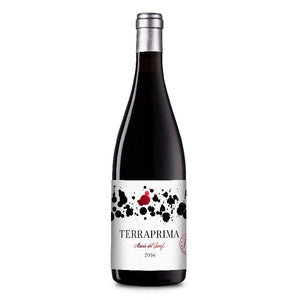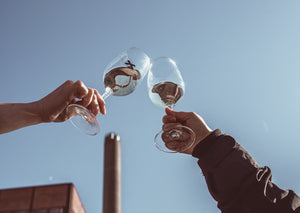
Can Ràfols dels Caus
The history of Can Ràfols dels Caus dates back to 1478, with the first written mentions of Caus. Over the centuries, the estate has grown, and today it covers 88 hectares of vineyards in the Massís del Garraf area. Jacinto Esteva bought the farm in 1939, and since 1979 the farm has been run by his grandson Carlos Esteva. Up to 28 different grape varieties are cultivated on the farm, which speaks of Carlos's curiosity and willingness to experiment. He was the first to plant Chenin Blanc and Incrocio Manzoni in his vineyards, which were previously unheard of in Spain. Taught by his father, Carlos is a passionate lover of Bordeaux wines, so he has also planted Cabernet Sauvignon and Merlot.
One of Carlos' biggest achievements on the farm is the construction of a new winery that works entirely with the help of gravity. The project started in 2000 and was only completed in 2015. The fifteen-year-long construction process is explained when you see how the whole thing has been adapted to Garraf's dolomite bedrock. In addition to winemaking, Carlos Esteva has excelled in nurturing nature. He showed commendable love of his home region when he blocked the planned mining operation in the area: by breaking his purse strings, 250 hectares of land changed hands, and the cement mining company was left licking its fingers. Currently, 90 hectares of vines are cultivated at the estate.
Due to the 300m high position of the Massís del Garraf, the temperature variations between night and day are large. The days at the end of summer seem to be scorching hot, but at night the temperature drops below fifteen degrees on a cloudless night. The humid wind blowing from the sea also cools the grapes from midday until dusk. This helps the grapes to reach optimal ripeness without the acid structure of the wines suffering. The soil consists of limestone and clay, favourable for vines. Because the land was once part of the bottom of the prehistoric ocean, the vineyard soils are rich in fossils. The high lime content and microbiological richness enable the production of wines that enjoy aging. Artificial irrigation is not used in the vineyards, not even during the hottest summers. Harvesting is done by hand to reduce the carbon footprint, and nothing but organic fertilizers are used among the vines. The vineyards surround the wine cellar, so if the grapes are collected early in the morning or even late at night, they are cool enough when arriving in the cellar, and do not need to be cooled separately.
The entire farm's production has been certified organic since the 2012 and 2013 vintages. The annual production of sparkling wines is about 10-20,000 bottles and the annual production of other wines is about 300,000 bottles.


